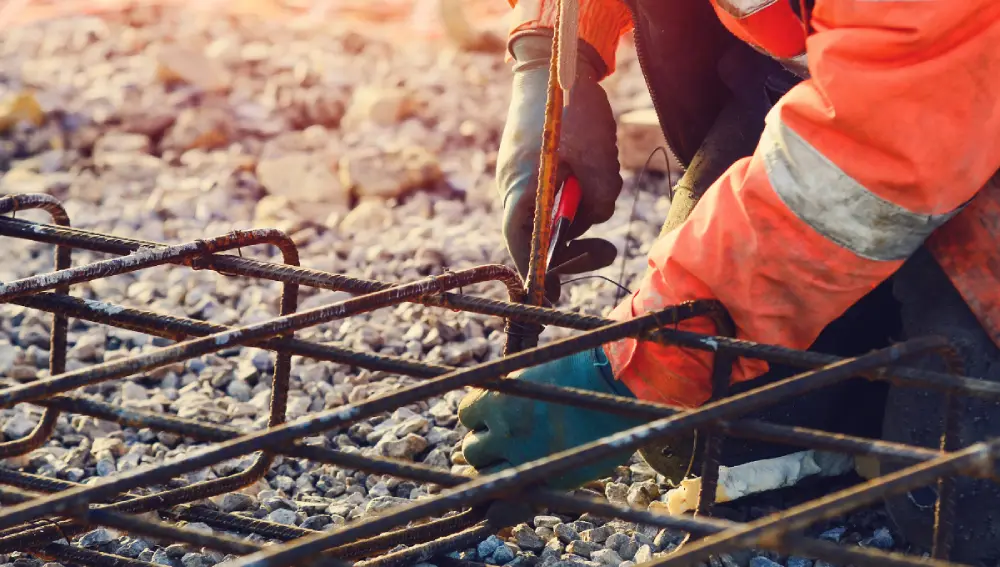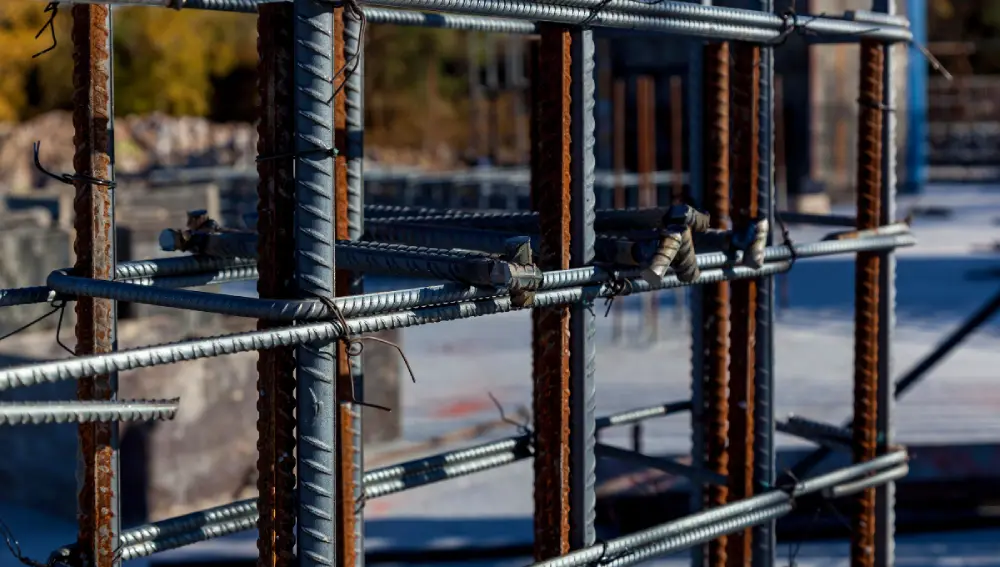Reinforcement in construction means strengthening materials. Concrete reinforcement is the primary purpose. We add more elements to make the materials tougher. This skill is crucial in modern construction. It ensures that buildings and infrastructure can handle many stresses. They can handle loads over time. Reinforcement is essential for creating safe, long-lasting, and resilient structures.
Importance of Reinforcement in Modern Construction Practices
Reinforcement is vital in modern construction for several reasons:
- It enhances concrete’s tensile strength because concrete is naturally weak in tension.
- Structures strengthened to boost durability against wear. This prolongs their lifespan.
- Reinforced structures are stronger and more dependable. They are less likely to collapse and keep occupants safe.
- It enables innovative architectural designs. It helps to make complex towers and other advanced buildings.
What is reinforcement in construction?

Reinforcement in construction involves making concrete stronger. Adding materials like steel bars or rebars and reinforced polymers accomplishes this. These materials resist tension, compression, and shear. They make concrete structures much more durable and robust.
By reinforcing concrete, engineers can reduce cracks and fractures and increase its load capacity. This strong capability makes reinforced concrete suitable for many construction uses, including buildings, bridges, dams, and roads. These materials strengthen concrete against many stresses, improving its performance and extending.its life in construction projects.
What is the role of reinforcement in concrete?
Reinforcement is essential. It ensures that buildings and other structures are strong. They can then withstand forces and stay standing. This added strength comes from adding metal bars to the concrete. This addition enhances the concrete’s ability to resist bending, cracking, and collapse.
Adding materials like steel or fibres to the concrete increases its structural capacity. This ensures that the concrete will be resilient and durable for a long time.
How Reinforcement is Used in Construction Projects
Various construction projects use reinforcement in different ways.
- Workers pour concrete around steel bars (rebars) or mesh. The World Wide Federation calls this reinforced concrete. This creates reinforced concrete. It is commonly used in beams, columns, and Two-way slabs.
- Prestressed Reinforced Concrete, it applies tension to the reinforcing materials before pouring the concrete. This enhances the structure’s ability to bear weight. It leads to a more robust and durable construction.
- Fiber-Reinforced Concrete: Fibers are mixed into the concrete. They make it stronger and more crack-resistant.
Types of Reinforcement Materials

Steel Reinforcement:
Steel bars called rebar help make buildings strong. These elements support beams, columns, and slabs in construction.
- Rebars have exceptional strength, capable of withstanding immense loads. They are important for making sure buildings don’t fall.
- Welded Wire Fabric (WWF) offers a modern twist to reinforcement. WWF consists of a grid of welded steel wires. It provides even reinforcement across large areas, such as slabs, pavements, and walls. This enhances strength. It also cuts labor costs because it’s easy to install. This makes it a top choice in many construction jobs.
FRP (Fiber-Reinforced Polymer):
- Carbon Fiber is a superhero among reinforcements. It’s known for its amazing strength-to-weight ratio. It is mainly used where weight is crucial. This is the case in bridges and when retrofitting old structures.
Carbon fiber reinforcement gives strong support without adding bulk. Its high performance makes it a go-to solution. It is for structures that need both strength and agility.
- Glass Fiber Reinforced Concrete (GFRC) brings innovation to architectural applications. GFRC integrates glass fibers into concrete. This enhances durability and flexibility.
It makes GFRC suitable for intricate architectural elements and panels. This material is versatile. It has aesthetic benefits. It also lasts a long time and is tough in many environments.
Each of these materials is key in modern construction. They offer unique strengths and uses. They meet the changing needs for strong, efficient, and sustainable structures. The materials reinforce skyscrapers. They also enhance the beauty of designs. They continue to redefine what concrete can do in buildings.
Building Reinforcement Techniques
Concrete Building Reinforcement
In concrete buildings, reinforcement techniques include placing rebars or WWF in the forms. This is done before pouring the concrete. This provides the necessary tensile strength to support loads and resist cracking.
Wall Reinforcement
Walls are reinforced using vertical and horizontal rebars or WWF. This reinforcement helps the walls withstand sideways forces. These forces include wind and earthquakes. It also stops cracking and buckling.
Foundation Reinforcement
Rebars reinforce foundations. They handle huge compression and tension from the structure above. Proper foundation reinforcement ensures the stability and durability of the entire building.
Conclusion
Reinforcement bolsters building structures, amplifying their resilience and protective capacity. This process uses materials such as steel and advanced composites. It ensures that buildings can withstand harsh weather and other tough environments.
Reinforcement prevents failures. It also extends the lifespans of buildings. This makes buildings more resilient and reliable. Engaging experts in reinforcement is crucial.
Builders can use these advanced reinforcement methods. They make structures stronger, ensuring their safety and longevity. This precision and expertise are key to constructing durable architecture.
FAQ
Steel is called reinforcement because it is used to strengthen and support concrete in construction. Concrete is strong in compression but weak in tension. Steel bars (rebar) are added to concrete to handle the tensile forces, making the structure stronger and more durable. This combination is known as reinforced concrete.
The purpose of reinforcement is to strengthen concrete structures by helping them withstand tensile forces. Concrete is strong in compression but weak in tension. Reinforcement, usually steel bars, adds tensile strength, making the overall structure more durable and able to bear loads without cracking or breaking.

